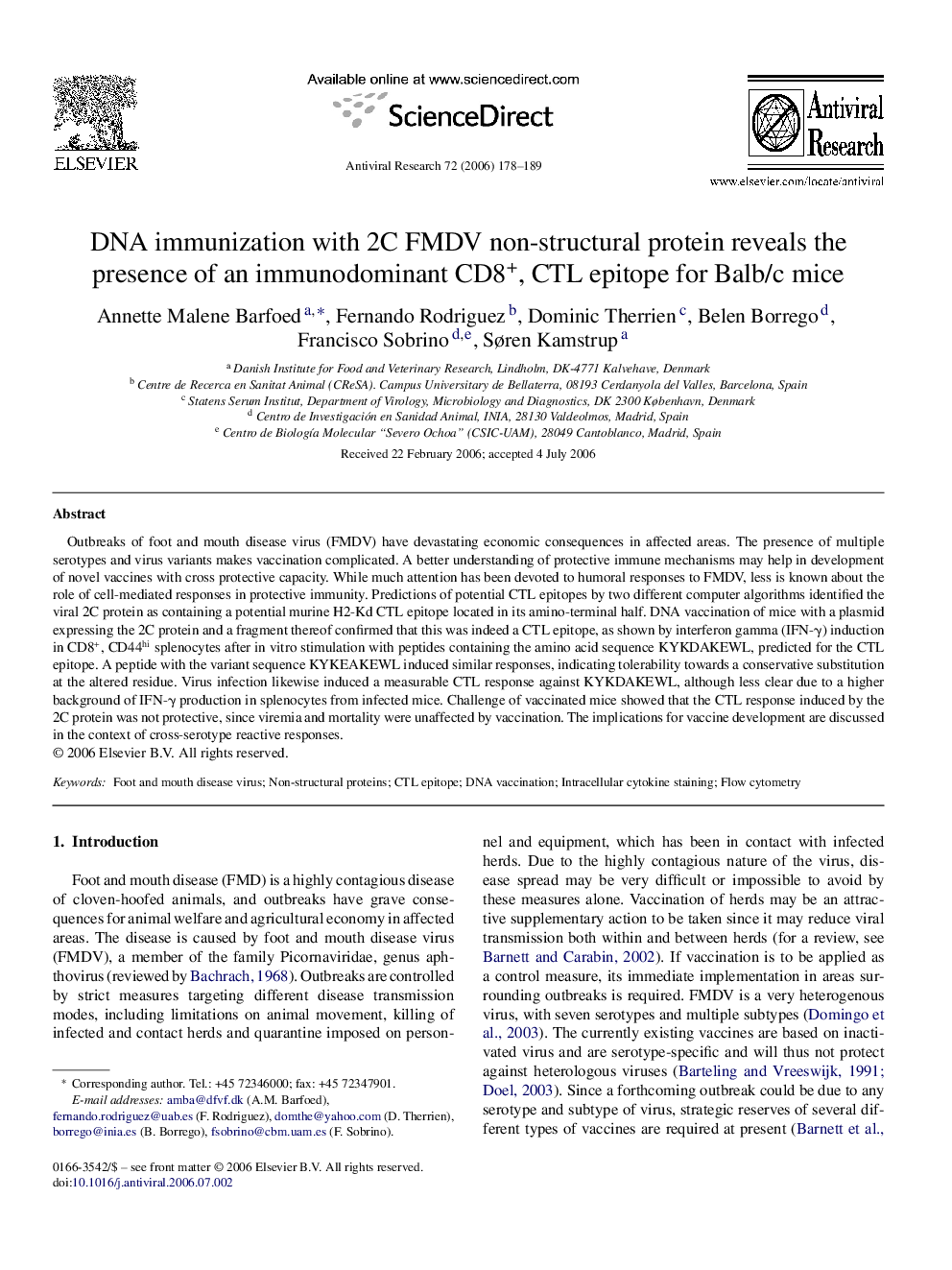| Article ID | Journal | Published Year | Pages | File Type |
|---|---|---|---|---|
| 2511671 | Antiviral Research | 2006 | 12 Pages |
Outbreaks of foot and mouth disease virus (FMDV) have devastating economic consequences in affected areas. The presence of multiple serotypes and virus variants makes vaccination complicated. A better understanding of protective immune mechanisms may help in development of novel vaccines with cross protective capacity. While much attention has been devoted to humoral responses to FMDV, less is known about the role of cell-mediated responses in protective immunity. Predictions of potential CTL epitopes by two different computer algorithms identified the viral 2C protein as containing a potential murine H2-Kd CTL epitope located in its amino-terminal half. DNA vaccination of mice with a plasmid expressing the 2C protein and a fragment thereof confirmed that this was indeed a CTL epitope, as shown by interferon gamma (IFN-γ) induction in CD8+, CD44hi splenocytes after in vitro stimulation with peptides containing the amino acid sequence KYKDAKEWL, predicted for the CTL epitope. A peptide with the variant sequence KYKEAKEWL induced similar responses, indicating tolerability towards a conservative substitution at the altered residue. Virus infection likewise induced a measurable CTL response against KYKDAKEWL, although less clear due to a higher background of IFN-γ production in splenocytes from infected mice. Challenge of vaccinated mice showed that the CTL response induced by the 2C protein was not protective, since viremia and mortality were unaffected by vaccination. The implications for vaccine development are discussed in the context of cross-serotype reactive responses.
